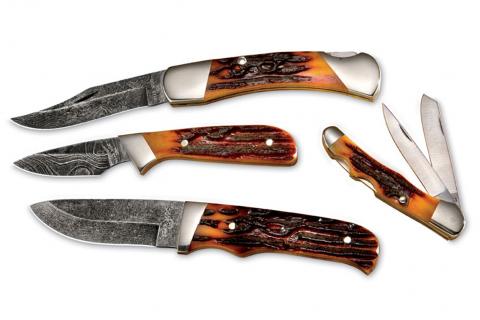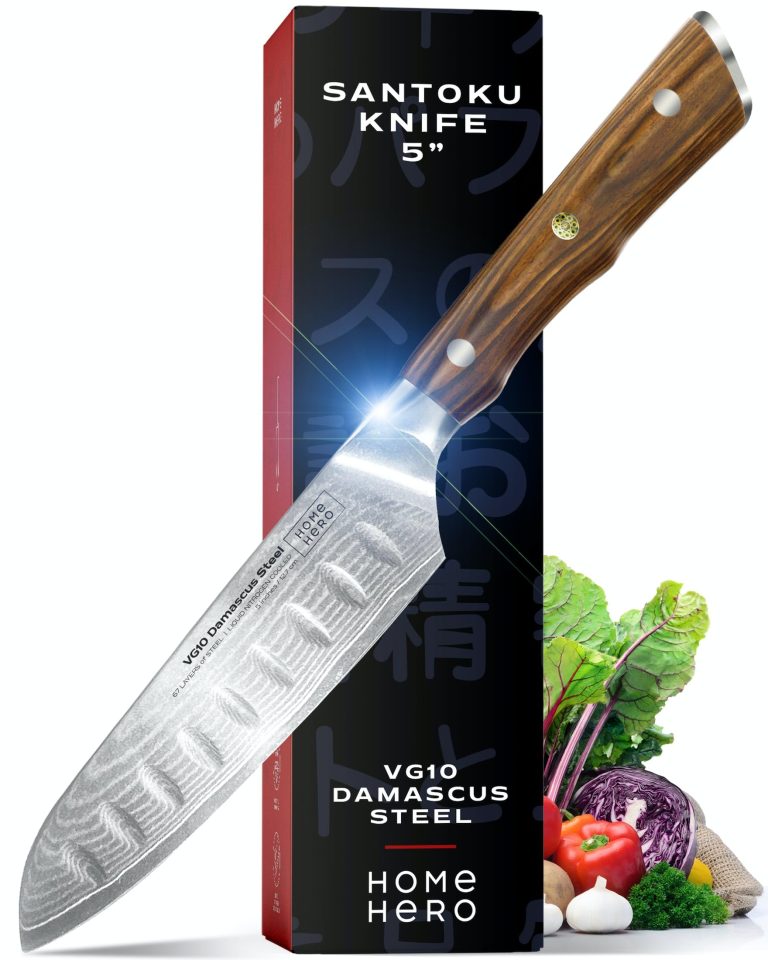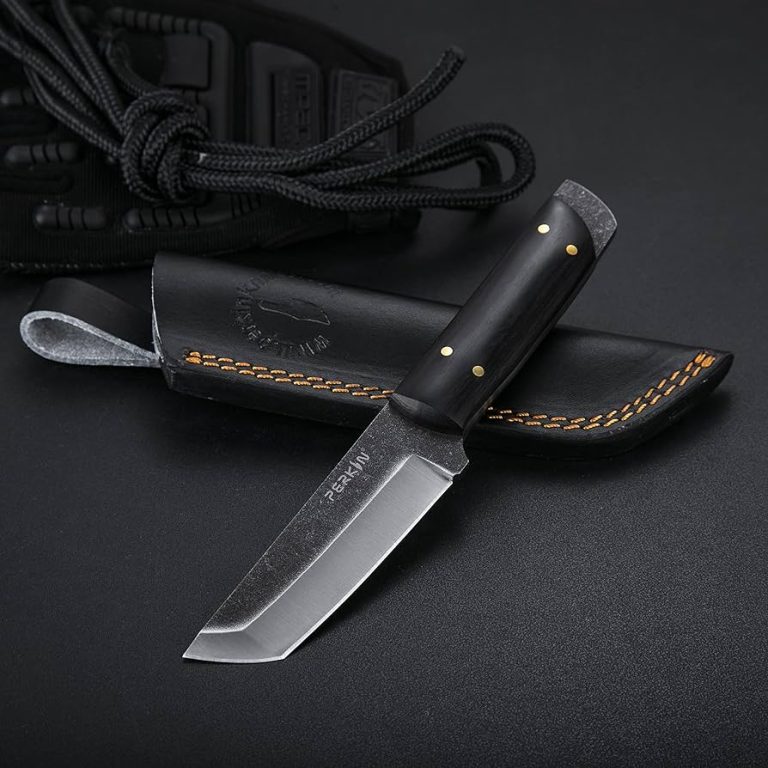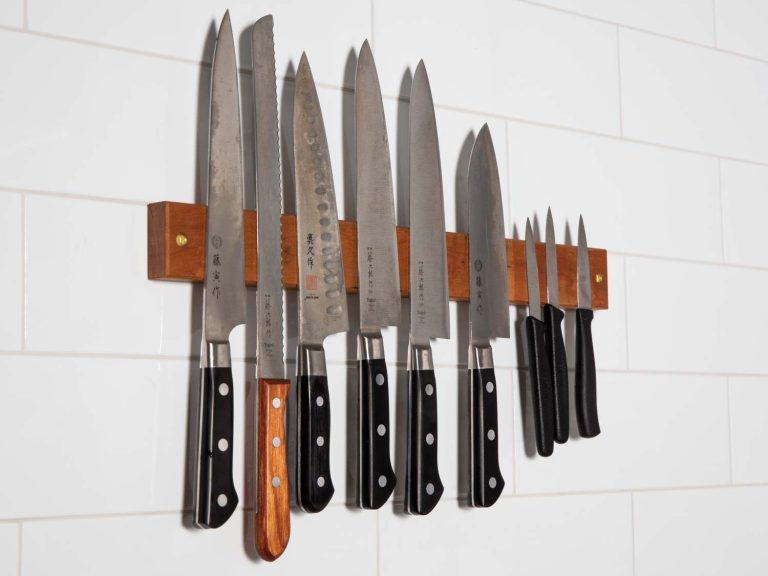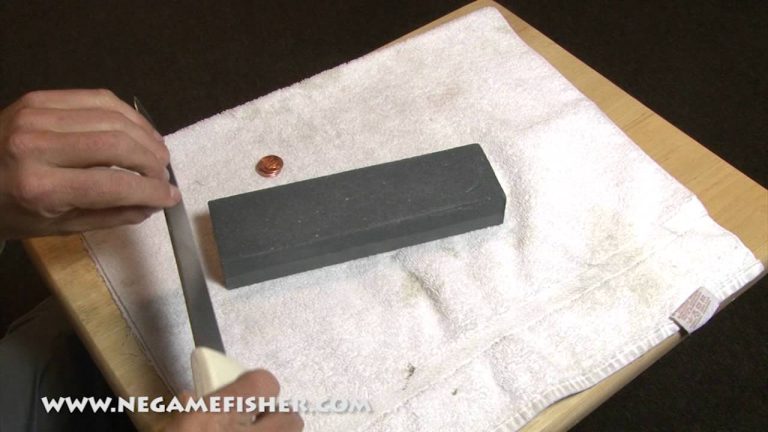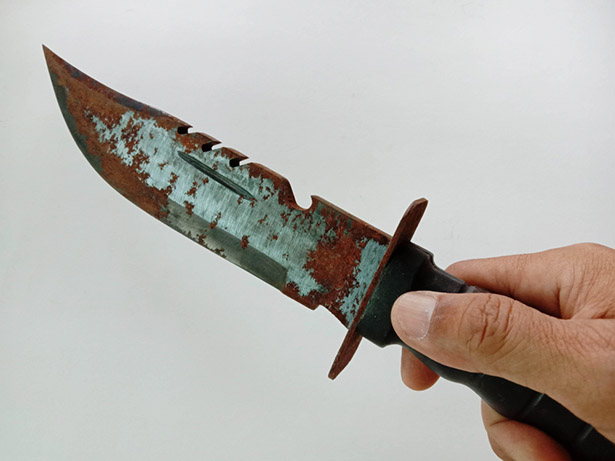How to Safely Dispose of Old Or Broken Builders Knives
To safely dispose of old or broken builder’s knives, follow these steps: Wrap the knife in an old towel or thick cardboard, tape it securely, and label it as “sharp object” before placing it in a puncture-resistant container or sharps disposal box. Alternatively, contact your local waste management facility or recycling center for proper disposal options.
Taking these precautions ensures the safe handling and disposal of potentially dangerous tools. Builders knives are commonly used in construction projects but can become old or broken over time. Disposing of these tools improperly can pose a risk of injury to others and impact the environment.
To ensure the safe disposal of old or broken builder’s knives, it is essential to follow proper procedures. This article provides guidelines on how to dispose of these tools safely, including wrapping them securely, labeling them as “sharp objects,” and placing them in appropriate containers or utilizing waste management facilities. By following these steps, you can protect both individuals and the environment from potential harm.

Credit: www.thecleverhomeowner.com
Why Proper Disposal Is Necessary For Builders Knives
Proper disposal is essential for builders knives to ensure safety and environmental responsibility. Learn how to safely dispose of old or broken knives to prevent accidents and minimize waste.
Builders knives, like any other tools, have a lifespan. Over time, they can become worn out, damaged, or simply no longer fit for use. While it may be tempting to toss them in the regular trash or leave them lying around, proper disposal of builders knives is crucial for multiple reasons.
In this section, we will explore the potential hazards of improper disposal and the environmental impacts of incorrect disposal.
The Potential Hazards Of Improper Disposal
Improperly disposing of old or broken builders knives poses significant risks to both humans and the environment. Some of the potential hazards include:
- Injuries and accidents: When these sharp and potentially rusty knives are carelessly discarded, unsuspecting individuals, such as waste management workers or even curious passersby, may sustain serious injuries. Cuts, punctures, and other accidental wounds are not uncommon, leading to pain, infection, and even hospitalization.
- Health risks: If builders knives end up in landfills or are incinerated, they can release harmful substances into the air, soil, and water. This can contribute to air pollution, which has detrimental effects on human health and can lead to various respiratory problems.
- Spread of diseases: Improperly disposed of knives that come into contact with hazardous materials or substances can potentially transmit diseases. This is especially concerning when dealing with contaminated or infected materials.
Environmental Impacts Of Incorrect Disposal
The incorrect disposal of builders knives can harm the environment in several ways:
- Soil contamination: Chemicals and metallic components present in builders knives can contaminate the soil. Over time, this can lead to soil degradation, affecting its fertility and disrupting the natural ecosystem.
- Water pollution: Knives that are disposed of in water bodies, such as rivers or lakes, can contaminate the water. This pollution poses a threat to aquatic life and can have long-lasting effects on entire ecosystems.
- Resource wastage: Builders knives often contain various types of materials, including metal and plastic. By improperly disposing of them, valuable resources are wasted instead of being recycled. Recycling these materials helps reduce the need for new production, conserving energy and minimizing resource depletion.
Properly disposing of old or broken builders knives not only prevents accidents and injuries but also protects the environment and promotes sustainable practices. By following the correct disposal methods, we can ensure the safety of individuals and contribute to a healthier planet for current and future generations.
How To Identify Old Or Broken Builders Knives
Safely dispose of old or broken builders knives by identifying their faulty condition. Follow these steps to ensure safe and proper disposal.
Here are some signs to look out for:
- Signs of wear and tear:
- Blunt blade: A knife with a dull blade may indicate that it has been used extensively and requires sharpening or replacement.
- Rusty blade: Rust can not only compromise the knife’s integrity but also pose a health hazard. If you notice rust spots on the blade, it’s a clear sign that the knife is no longer usable.
- Loose handle: A handle that has become loose or is starting to detach from the blade can make the knife unsafe to use and should be replaced.
- Cracked or chipped blade: Cracks or chips on the blade can create weak points that may break off during use, making the knife ineffective and dangerous.
- Alerting indicators for broken knives:
- Bent or warped blade: If the blade has become bent or warped, it will not be able to cut properly and poses a higher risk of accidents.
- Broken tip: A broken or damaged tip can make precision cutting difficult and increase the chances of accidents.
- Fractured handle: A handle that is cracked or broken compromises the stability and grip of the knife, calling for immediate replacement.
- Damaged locking mechanism: If the knife has a folding or retractable blade feature, a damaged locking mechanism can lead to unexpected blade movements and potential injuries.
Remember, it’s crucial to identify and properly dispose of old or broken builders knives to avoid any harm to yourself or others. Now that you know how to identify signs of wear and tear and alerting indicators for broken knives, you can take the necessary steps to maintain a safe working environment.
Safe Disposal Methods For Builders Knives
Safely disposing of old or broken builders knives is important to prevent any accidents or injuries. Follow the proper methods for safe disposal, such as using puncture-resistant containers or returning them to a professional, to ensure the protection of yourself and others.
Local Recycling Programs For Metal Objects:
- Research local recycling programs that accept metal objects, including builders knives.
- Contact your local recycling center or municipal waste management facility to inquire about their policies for accepting and recycling builders knives.
- Ensure that the recycling program you choose accepts sharp objects such as knives, as some centers may have specific guidelines or restrictions.
Guidelines For Packaging And Securing The Knives:
- Before disposing of builders knives, make sure to remove any detachable parts or blades, if possible.
- Secure the blades using tape or sheathes to prevent any accidents or injuries during transportation and disposal.
- Consider using a sturdy cardboard box or a puncture-resistant container to package the knives, ensuring that they are well-packaged and safely contained.
Transporting The Knives To Disposal Facilities:
- When transporting builders knives, it’s important to prioritize safety. Ensure that the knives are securely packaged and won’t pose a risk to anyone handling them.
- If possible, place the packaged knives in the trunk of your vehicle to prevent potential accidents.
- If the knives have sharp or exposed blades, consider using additional protective measures like bubble wrap or padding to minimize the risk of injury.
Remember, safe disposal methods are essential not only for personal safety but also for the preservation of our environment. By following these guidelines and utilizing local recycling programs, you can ensure that your old or broken builders knives are disposed of safely and responsibly.
Alternatives To Disposal
Safely dispose of old or broken builders knives by exploring alternative options to disposal. Find eco-friendly ways to handle these tools and minimize waste.
With a little creativity and resourcefulness, you can find alternative ways to deal with your old or broken builder’s knives. Instead of simply throwing them away, consider the following options:
Repairing and repurposing old knives:
- If your builder’s knife is still salvageable and only needs a bit of TLC, consider repairing it instead of disposing of it. Some common repairs include:
- Sharpening the blade: Use a sharpening stone or a honing guide to bring back the knife’s cutting edge.
- Replacing the handle: If the knife’s handle is damaged or worn out, you can replace it with a new one to give the knife a fresh look and feel.
- Fixing loose parts: Check if any screws or bolts need tightening to ensure the knife is secure and safe to use.
Donating knives to relevant organizations or charities:
- Many organizations and charities can benefit from receiving old or unused builder’s knives. Consider donating your knives to one of the following:
- Habitat for Humanity: This nonprofit organization accepts donations of tools, including knives, to support their efforts in building safe and affordable housing for those in need.
- Local trade schools or vocational training centers: These institutions may appreciate receiving used knives for their students to practice with and learn essential skills.
- Community projects or DIY workshops: Some local groups run community projects or workshops where donated tools can be shared and utilized by participants.
Remember, by repairing or repurposing your old knives or donating them to relevant organizations, you can not only reduce waste but also contribute to the community and help those in need. So, before you decide to dispose of your builder’s knives, explore these alternatives and give them a new lease on life.
Additional Precautions
When it’s time to safely dispose of old or broken builder’s knives, follow these 6 guidelines to ensure proper precautions are taken. Proper disposal is important for the safety of both individuals and the environment.
Proper Storage Until Disposal Can Be Arranged:
- Store old or broken builders knives in a designated container or box to prevent any accidental injuries.
- Keep the container out of reach of children or pets to avoid any potential harm.
- Ensure that the container is properly labeled as hazardous waste to alert others of its contents.
- Consider storing the container in a locked or secure area to prevent unauthorized access.
Ensuring Personal Safety During Disposal:
- Wear thick gloves and safety goggles when handling old or broken builders knives to protect yourself from cuts or eye injuries.
- Double bag the knives or wrap them in thick, puncture-resistant material such as old towels or cardboard to prevent accidental punctures during transportation.
- Avoid placing the knives in regular trash bins or recycling containers, as they may pose a risk to waste management personnel.
- Contact your local waste management facility or recycling center to inquire about their specific guidelines for disposing of hazardous tools like builders knives.
Conclusion
Disposing of old or broken builders knives should be done responsibly to ensure the safety of both individuals and the environment. By following a few simple steps, you can properly dispose of these knives without causing harm. Firstly, make sure to inspect the knives for any remaining sharp edges and use protective gloves when handling them.
Next, separate the blades from the handles and package them securely to prevent accidents during transportation. It is important to check with local recycling centers or waste management facilities on the best method for disposing of these items. Some facilities may accept the knife blades for recycling, while others may require them to be placed in specific hazardous waste containers.
By taking the necessary precautions and following proper disposal practices, we can contribute to a safer and cleaner environment.

